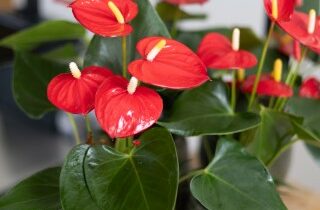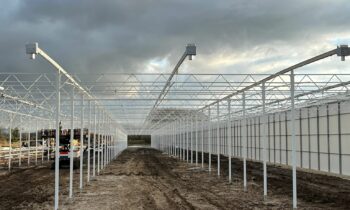Currently, energy prices are extremely high and we do not know what lies ahead for the coming winter. It is absolutely essential that major energy savings are made to keep plant costs under control.
Since greenhouse climate control is an interaction between parameters such as temperature, humidity, light and irrigation, it is important to determine a strategy whereby these aspects are still balanced if energy savings are to be made in many areas. If not implemented carefully, this could lead to severe growth delay and possibly significant loss. This is because fungal diseases such as Rhizoctonia, Fusarium and Botrytis can develop and spread much faster if the humidity in the greenhouse is high.
Water balance
Water balance in the cultivation of Phalaenopsis is extremely important. Because irrigation sessions are usually generous (12-16 l/m² every 4-7 days on average), moisture intake is high. All that moisture must then be evaporated and drained to keep the plants, and especially the roots, healthy.
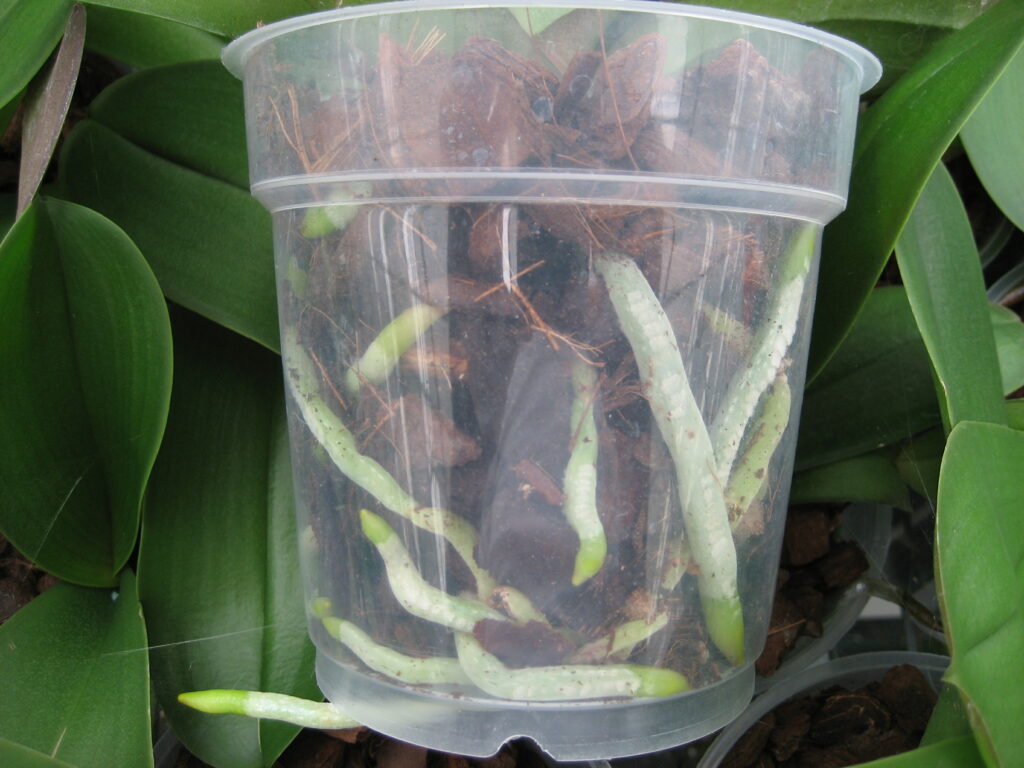
To achieve this, Phalaenopsis cultivation traditionally uses a standard minimum lower tube to stimulate evaporation, with a supporting minimum top tube to quickly drain this moisture. This also often involves the use of a standard gap in the bottom screen, whether combined or not with a minimum window position for the same purpose. All these measures use a lot of energy. Smarter use or even (under strict conditions) partial omission of these schemes can save a lot of energy without sacrificing growth or leading to higher disease pressure.
Lower tube
A minimum tube is often set very high (values of ±50°C are no exception) and is hardly ever reduced, even when outside radiation has taken over its function. In these cases, there is an energy surplus and excess heat is produced that needs to be vented. There is thus considerable potential for energy savings here. Set a lower temperature of, say, 40°C. By doing so, much is already being achieved. If there is sufficient radiation during the day, the tubes do not need to be heated straight after radiation drops in the afternoon. On the day of watering, it is good to provide a little more heat than the exact heat demand to dry the crop faster, but on the other days this is not really necessary. Example: set the minimum tube at ±40°C on the day of watering until ±3 pm when the outdoor radiation is <300 W/m².
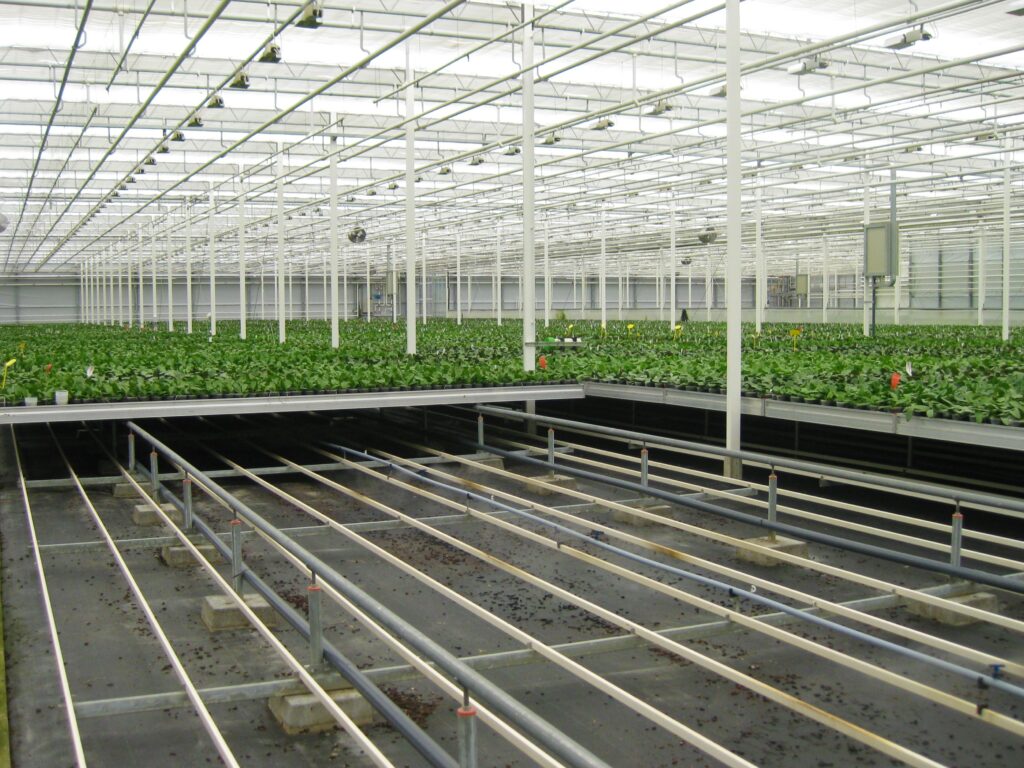
Top tube
The use of a minimum top tube is less common, but sometimes useful when humidity levels in the greenhouse are too high. The purpose of deploying this is to drain moisture. It is advisable to raise the top tube only when there is substantial heat demand or excessive humidity to remove moisture. In Phalaenopsis, the critical RH is around 75-80% (growing phase), at which point the risk of fungal and bacterial diseases becomes very high. It is therefore advisable not to let the moisture level exceed ±80% in any case. Example setting: at a moisture level of >75% and an irradiation of <300 W/m², set the tube to ±40°C; in all other cases no minimum temperature of the top tube.
Dehumidification through gaps in screens and ventilation
On the day of watering, the humidity is extra high and it is important to remove the extra moisture quickly. In this case it may help to open the screen a little. In terms of energy efficiency, this is a costly measure because a lot of heat is also lost with the moisture. In addition, temperature differences in the greenhouse with a gap in the screen also increase significantly. As a result, the set heating temperature will have to be increased to ensure it is warm enough throughout the greenhouse to prevent premature flowering. This can be partly prevented by additional ventilation above the closed screen. This allows for dehumidification in a much more energy-efficient way. So don’t make a gap in the screen until you have exhausted all the other measures to prevent humidity rising above 80%.
Air movement
A good way to dry the crop and boost evaporation is to create air movement. Run the fans in the greenhouse for 24 hours to keep the climate optimally dry, using energy-saving measures. On the day of watering, you can opt to speed up the fans.
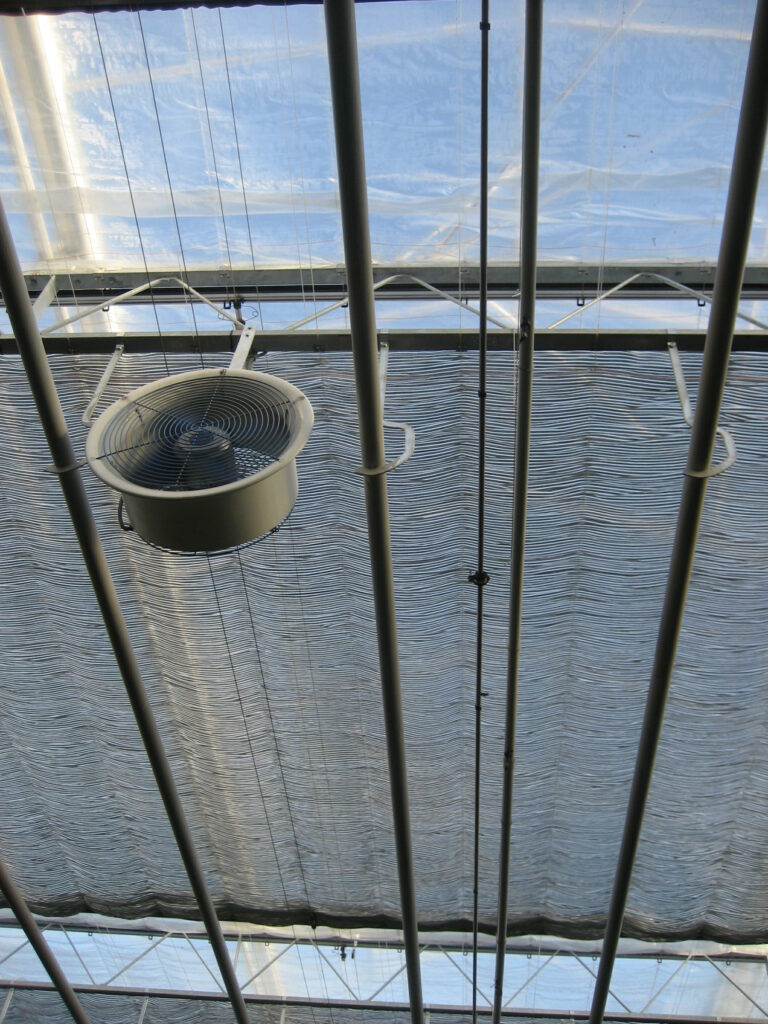
Watergift
Om te voorkomen dat met de energiebesparende maatregelen het vochtniveau in de kas te hoog oploopt en dat het substraat te lang nat blijft, is het noodzakelijk om aanpassingen te doen in de watergift. Wanneer dit nagelaten wordt, zal dit onherroepelijk leiden tot uitval. Een te natte pot door een trage afdroging leidt vaak tot een Rhizoctonia-aantasting, maar uitval door Fusarium of Pythium is ook mogelijk.
Irrigation frequency
Reducing the irrigation frequency is a useful adjustment. When the average temperature of the lower tube is reduced, drying will slow down a little, which means that the watering frequency should already be reduced automatically. Keeping it slightly drier will lead to fewer irrigation sessions, which will result in lower energy demand.
Irrigation quantity
A large irrigation session saturates the substrate more than a smaller one. The drying time can be reduced by saturating the substrate less by means of smaller irrigation sessions. The only risk is that the disparity in moisture between pots may increase. Focusing on this is very important. If any disparity is found, a one-off, slightly larger irrigation session can correct it again. Dividing the irrigation session into smaller sessions can also help to increase uniformity.
Diluent
The use of a diluent can significantly facilitate crop drying. Adding a diluent to the irrigation water simply makes the crop less wet. It may be possible to halve the drying time without consuming additional energy. The diluent does not need to be added to the entire irrigation session; it can be limited to the last ±2 l/m².
Substrate and pots
We also recommend using a coarser substrate that drains and dries more easily, in combination with a pot that has several drainage openings at the bottom, thus even further optimizing the drying process. We do not recommend using a pot with a so-called “water rim”, in which some water remains after irrigating: this greatly saturates the substrate and extends the drying time.
EC and nutrition
If measures are taken to ensure slower growth, the plants also absorb much less nutrition. If the nutrient supply remains unabatedly high, the EC in the pot will increase, causing root activity to decrease, possibly resulting in Rhizoctonia infestation. This can be prevented by reducing the EC of the irrigation water or correcting it much more frequently by means of an irrigation session without EC – for example, a clean irrigation session once every four sessions as standard.
Temperature
Growing phase
The cultivation temperature in Phalaenopsis averages ±28°C. Premature flowering will start when the plant temperature reaches ±26°C or lower for an extended period of time. Of course, there are many differences in sensitivity according to the variety, and the age of the plants is also an important factor. In addition, the season also plays a role: increased sensitivity can be expected not only in autumn but also in spring. If there are important differences in greenhouse temperature, it is common to set the heating temperature higher than ±28°C to prevent the coldest areas from falling below the critical limit. A normal heating temperature would be ±28.5°C or ±29.0°C. With closed screens and proper insulation, it should be possible to grow with a heating temperature of ±27.5°C without encouraging premature flowering. The closed screens prevent strong radiation and reduce temperature differences inside the greenhouse. This saves considerable energy. In particular, if there is much less lighting, there will be less assimilation surplus and the plant is less likely to induce branches.
Cooling phase and finishing phase
In the winter, heating is also used in the cooling phase and finishing phase. At night in particular savings can be achieved by maintaining a lower greenhouse temperature. However, as in the growing phase, it is very important not to let the plant temperature drop too much. A plant temperature of 17.0-17.5°C should be considered the absolute lower limit in this regard to prevent cold damage. Therefore, keep the screens closed at night, especially when the lights are off. During the day, more irradiation can then compensate for the temperature to some extent. A proper heating regime setting is 18°C at night and 19°C during the day (ventilation from 20°C).
Finishing phase
The temperature in the finishing phase also largely determines the flowering speed. Saving energy and thus maintaining a lower temperature in the finishing phase will lead to an extension of the cultivation time. In addition, it also has a fairly large impact on branch length. In particular, a greater temperature difference between day and night results in increased branch length. Of course, these effects are very variety-dependent. It is therefore not advisable to change the temperature too much at this stage of cultivation. A heating temperature of 20.0°C and a ventilation temperature of 21.0 to 22.0°C are generally considered acceptable values.
Light
Light is very important for growth and development. In the winter months, there is a considerable shortage of light. On a dark day, the crop achieves a light sum of ±0.5 mol/m²/day; on a sunny day it is ±1.0 mol/m²/day. This is too low: plants will become smaller at such light levels. To keep plants from deteriorating, a minimum light intensity of ±30 µmol/s/m² is required for 12-14 hours. This amounts to a light sum of at least 1.5 mol/m²/day. Additional lighting is therefore necessary. Note that plants do not grow at these light levels either: This can be achieved “smartly,” by ensuring that sufficient light is available at the beginning of the day (first half of the light period). This is when a Phalaenopsis makes the most efficient use of light. This comes down to lighting at half power from ±2.00 in the morning until ±9.00. At ±50 µmol/s/m², this yields a light sum of ±1.2 mol/m². Of course, it is a good idea to make the most of outdoor light. Lighting savings can be achieved year-round. Saving in autumn and spring has the advantage that even on a dark day, there is still a reasonable amount of outside light. We do not recommended attempting to save too much energy during the darkest period of the year, roughly from five weeks before the shortest day (mid-November) to five weeks after the shortest day (early February).
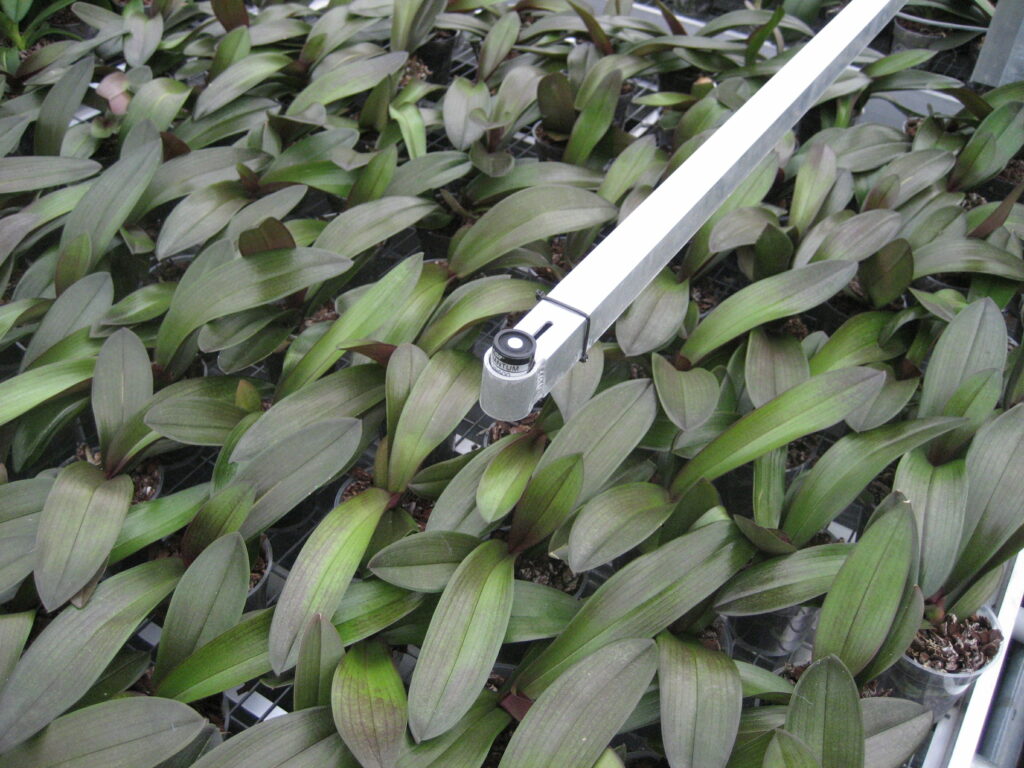
LED
Many growers have purchased (albeit partially) LED lighting and will be working with it this heating season. It is very important to pay extra attention to monitoring plant temperature. In fact, this is generally a lot lower with LED than with the usual SON-T lamps. This is especially important at night and in the afternoon. With a hybrid system, this applies to a somewhat lesser extent, but even so you should be alert at all times.
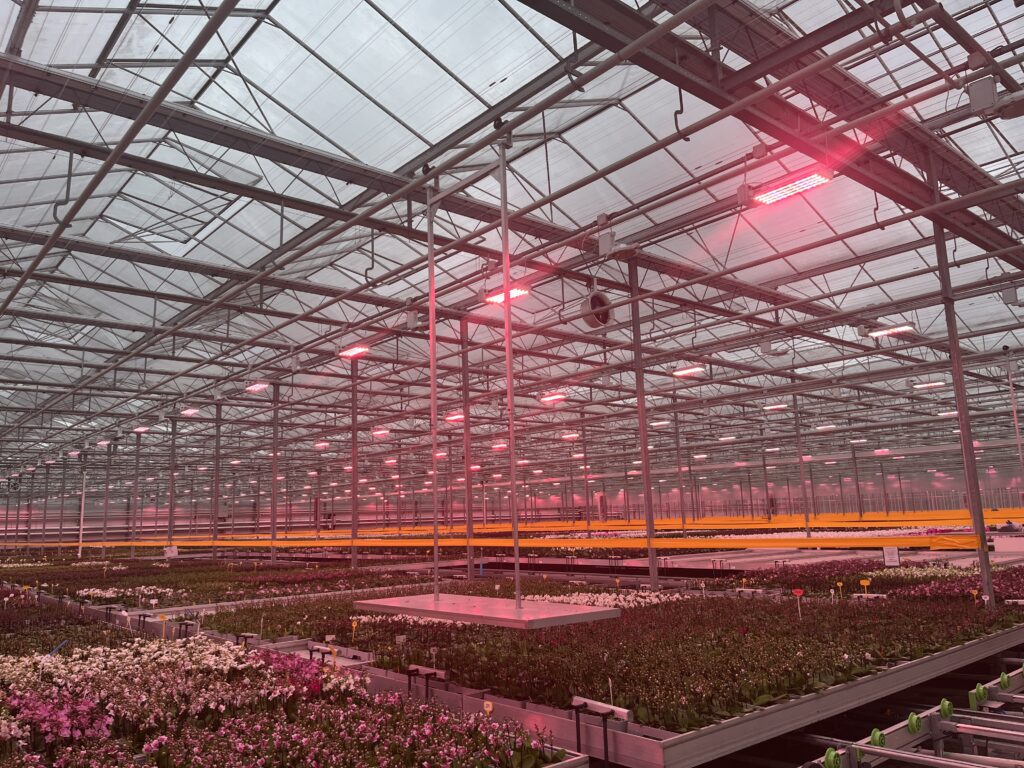
Insulation
Façade insulation
Many nurseries are equipped with sandwich panel façades. Without this cladding a lot of heat is lost, even when roll screens are installed on the façades. Additional façade insulation using bubble foil can significantly reduce this heat loss.
Additional screen or foil
In crops where high moisture levels can be maintained, greenhouse insulation with fixed foil is now widely used (e.g. Anthurium). When it comes to growing Phalaenopsis, this is not recommended in most cases. However, when the greenhouse is equipped with a screen with an open structure, it can make a big difference to put foil on the wire bed of the screen. The fabric and foil can then be used for daytime shading without consuming too much light. If the moisture level becomes too high, the foil can be shifted with the screen system towards the open screen or a gap can be left.
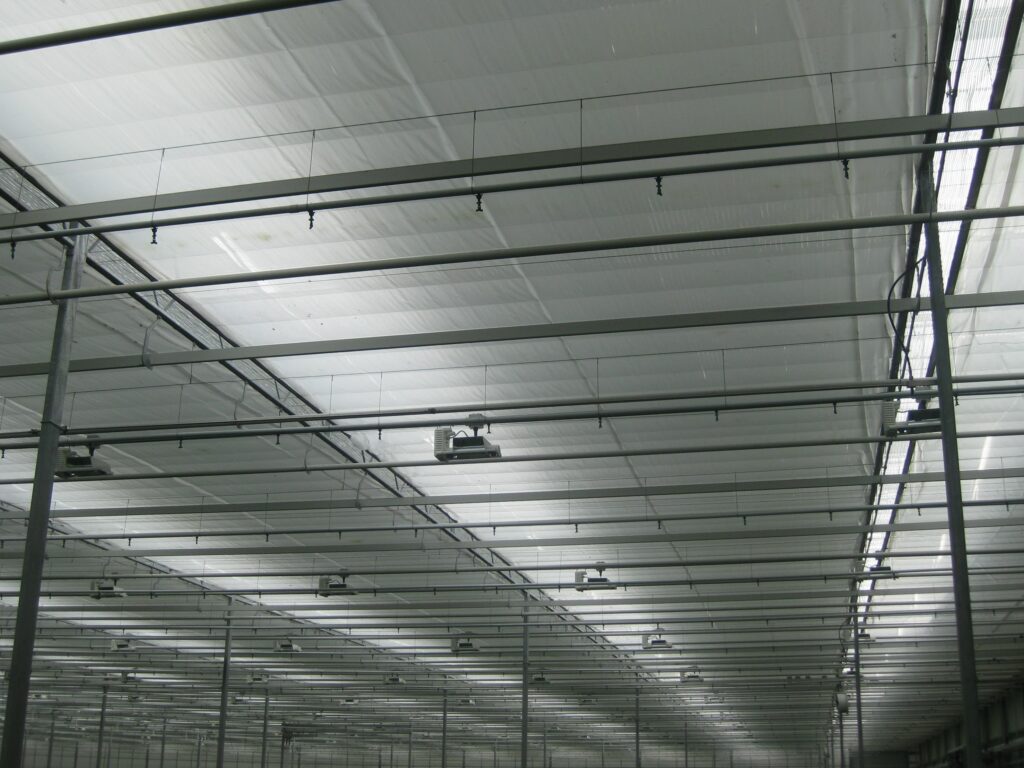
Balance in climate and control factors
When measures are taken to save energy, it is important to keep a balance in the climate. This is because there is a danger that the plants and substrate will remain too moist at lower energy inputs, giving fungal diseases a chance to develop.
Insulation can be a way to reduce the greenhouse’s heat loss, provided it does not compromise its ability to remove moisture too much. A fixed foil can quickly prove to be excessive in this regard, but additional façade insulation will ensure substantial savings.
It is therefore important to save energy on the one hand and limit the input of moisture on the other to prevent the substrate from staying too wet. In addition, measures that limit moisture input or encourage evaporation help to keep moisture in balance. Examples include additional air movement through fans, the use of a diluent added to the water, and the use of an open pot and coarse substrate.
In this case you should be aware that growth will slow down when light levels and, to a slightly lesser extent, the temperature are lower. The uptake and fixation of fertilizers by the plant is then lower, which calls for a lower feed water EC.
In short, it is very important to fine-tune all these parameters to get through the winter with lower energy consumption and minimal growth inhibition and loss.





